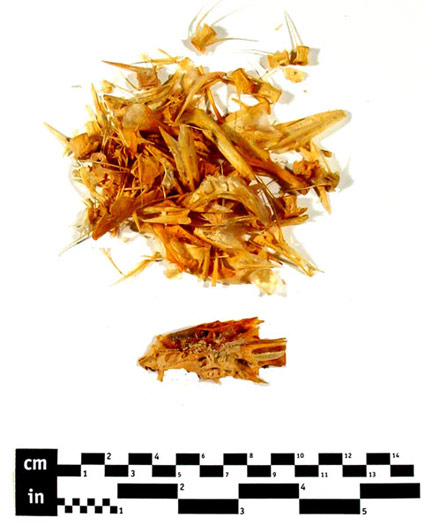Artifact
Spotted Sea Trout

| Artifacts | |||
|---|---|---|---|
| 9-0 | |||
Common Name: Spotted sea trout
Scientific Name: Cynoscion nebulosus
"It [Florida] abounds in every type of fish of excellent taste…They [the Indians] build weirs along the coast, some simply of stakes driven into the ground, and these are small. They make others bigger, which enclose an area equivalent to the reach of a musket-shot, out of stakes and reed grass, all driven into the ground and well-tied together, placed in a line in the manner in which one would make a sweepnet. And in the middle between the two arms, where it is the deepest they make a small enclosure where the fish collect when the tide goes out. And they catch them with a casting net."
Fray Andrés de San Miguel 1595
Notes:
Animal Used at Mission San Luis
The study of plant and animals from sites (ethnobotany and zooarchaeology, respectively) is one of the most illuminating aspects of archaeological research. It can reveal details about past environments, resources, settlement patterns, agricultural practices, architecture, social life, and diet unavailable from other types of data.
Since plant remains are so fragile and often difficult to see, we have limited their display to a static exhibit case format (see "Apalachee Life"). However, we have selected some animal bones found at Mission San Luis, along with comparative skeletal materials (Drawers 17-26), to give to a sense of the challenges faced by those researchers who identify, analyze, and interpret these materials.
We have supplemented the skeletal materials with archaeological and documentary information about the use of these animals in Spanish Florida and at Mission San Luis.


